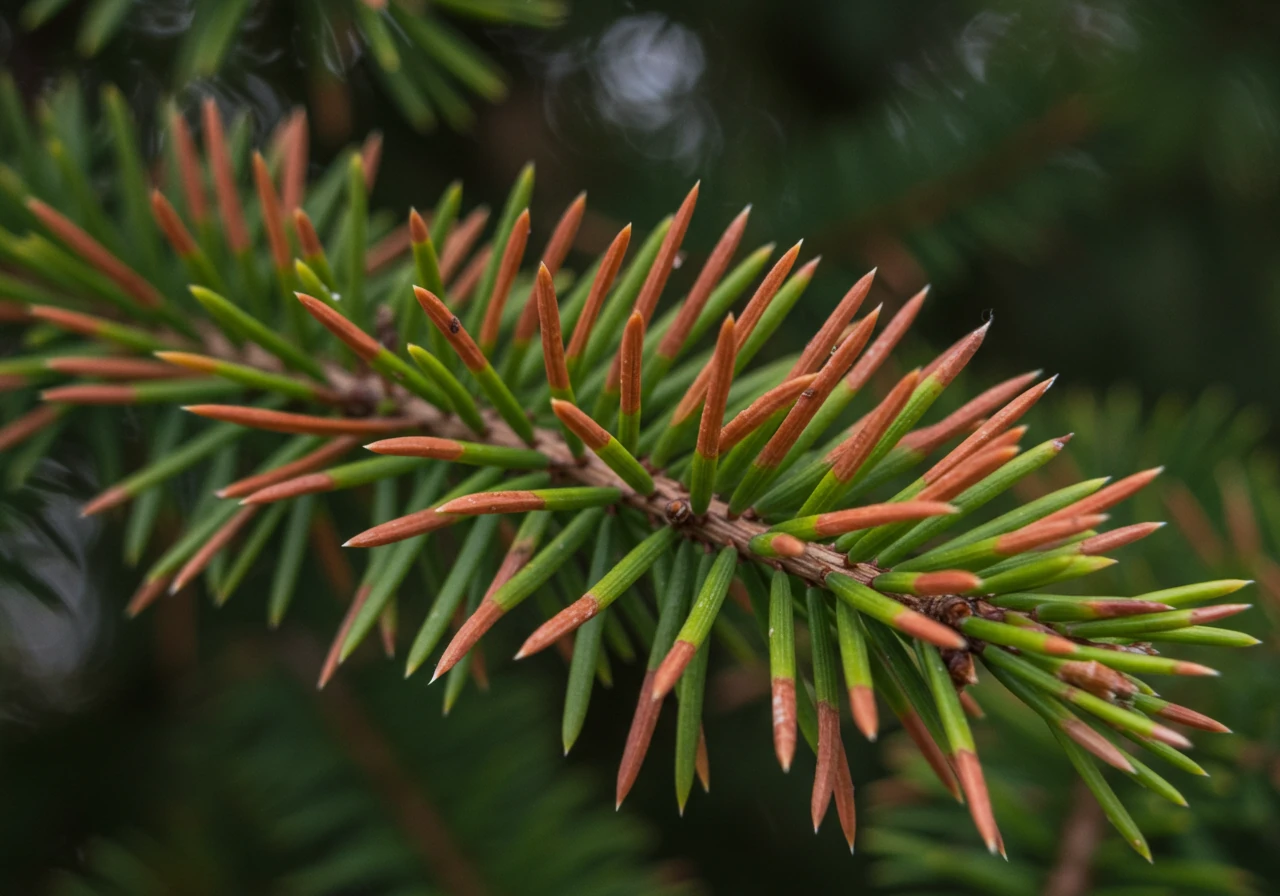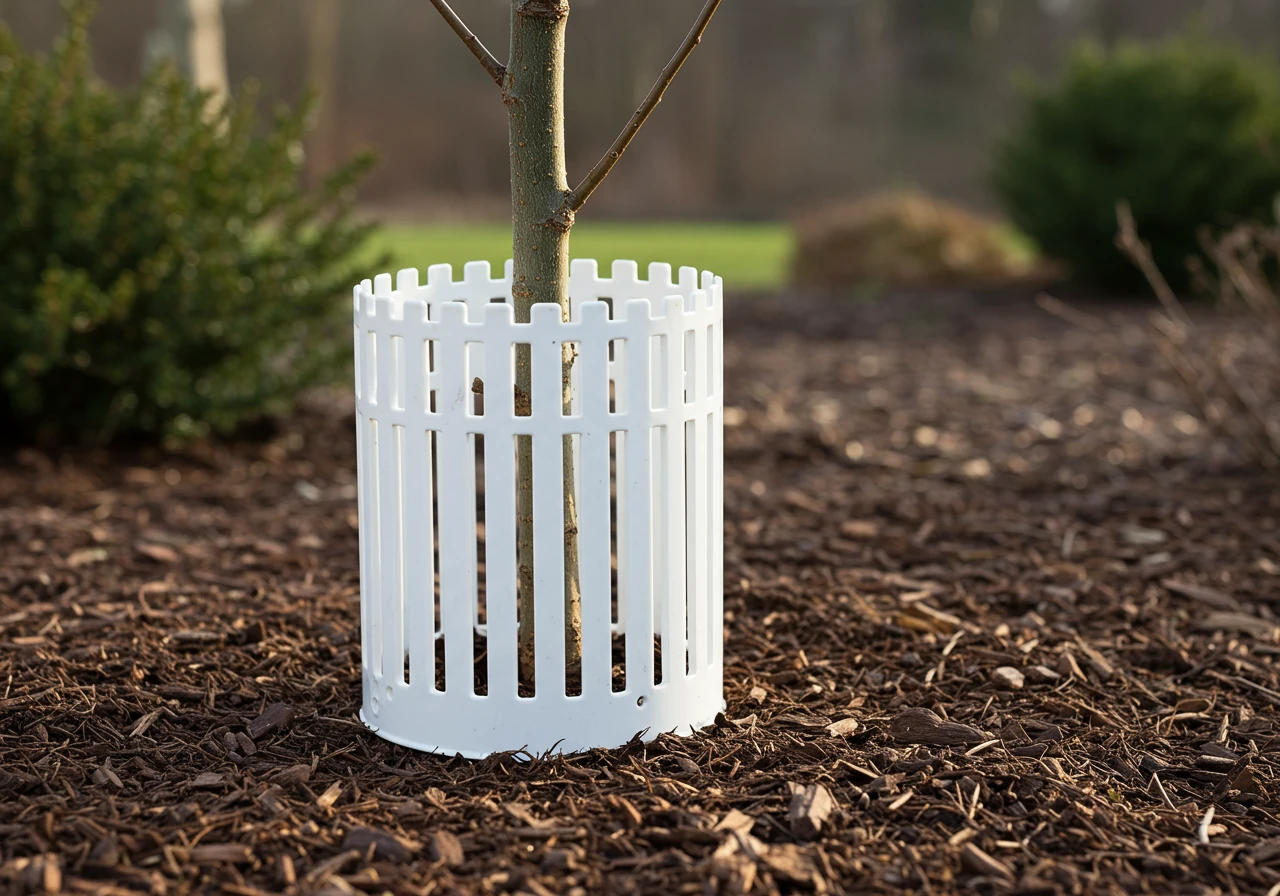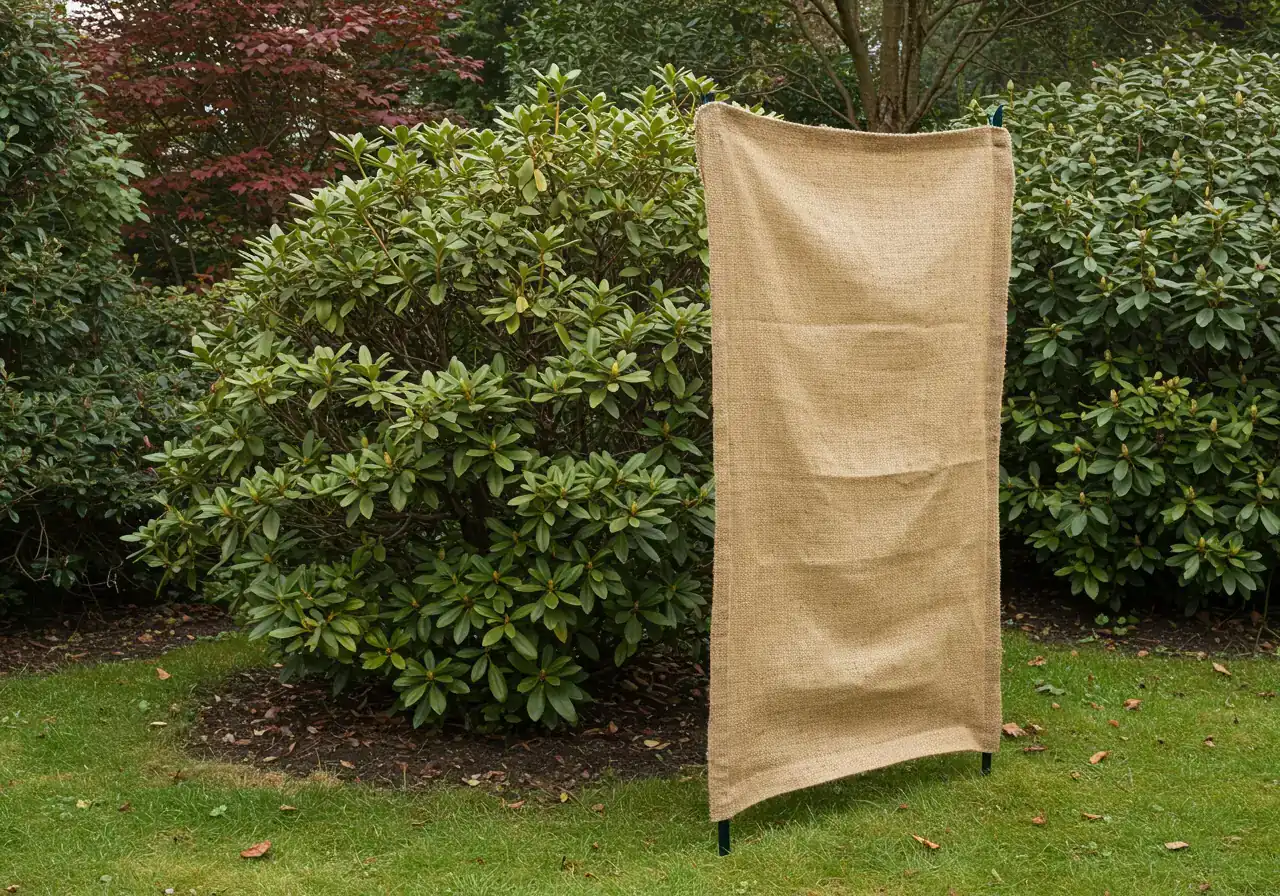Greely: Prep Young Plants for Winter (Lifecycle Care Tips)
Getting your yard ready for winter? Ensure your young plants survive the Ottawa cold. Need professional help?
Request Your Free Estimate TodayWinter Prep Essentials for Young Plants:
- Protect roots from freeze-thaw cycles with proper watering and mulching.
- Guard against winter desiccation (drying out), especially for evergreens.
- Shield young tree trunks from animal damage and sun scald.
- Understand the specific needs of perennials, shrubs, and trees.
- Timing is key: follow a fall prep calendar for best results.
Introduction: Brrr-ace Yourselves! Winterizing Young Plants in Greely
Alright, Greely gardeners, let's chat about winter! It feels like just yesterday we were enjoying sunny days, maybe admiring those lovely new shrubs or perennials we planted. But as every Ottawa resident knows, those beautiful fall colours fade fast, and soon enough, Jack Frost comes knocking *loudly*. Winter here in Greely, and across the region from Manotick to Osgoode, isn't exactly gentle, especially on our young plants.
These newcomers to your yard haven't had the time to develop the deep roots and tough bark that older, established plants boast. They're more vulnerable to biting winds, heavy snow loads, and those frustrating freeze-thaw cycles that are part of the Ottawa climate package deal. Think of winterizing as giving your young green buddies a cozy coat and a warm hug to get through the cold months.
Don't worry, it's not as complicated as it sounds! This guide is your friendly neighbourly advice column, packed with practical gardening and landscaping tips specifically for protecting those tender young plants right here in Greely. We'll cover simple steps you can take now to ensure they pop back up happy and healthy next spring. Let's get ready to tuck them in!
Why Young Plants Get the Winter Chills: Understanding Ottawa's Challenges
Okay, let's talk about why our young plants seem to shiver more than the old-timers in the garden when Ottawa's winter throws its worst at us. It's not just the bitter cold; it's the wild temperature swings and specific conditions here in our Zone 5a/4b climate that really test the newcomers. For precise local climate details, check resources like Environment Canada's Ottawa weather page.

Think of your recently planted trees, shrubs, and perennials like rookies on a hockey team. They simply haven't had the time to build up resilience. Their root systems aren't as deep or extensive, and their stems or bark lack the thickness of established plants. This makes them significantly more vulnerable to winter's tricky plays.
One major challenge is the classic Ottawa freeze-thaw cycle. One week plunges to -15°C, the next might nudge above freezing thanks to some sun, and then bam – back into the deep freeze overnight. This relentless expansion and contraction of moisture in the ground causes frost heave. Imagine the soil literally pushing your little plants upwards, potentially damaging or exposing their shallow roots. This is especially a concern in the heavy clay soil common in areas like Greely and Nepean. Tackling soil structure is vital; understanding Greely Sod Installation: Conquering Clay Soil for a Lush Lawn offers insights applicable beyond just lawns. Similarly, learning about Greely Fall Lawn Aeration: Unlocking Soil Secrets shows how improving drainage in compacted clay can lessen frost heave impacts around your plantings. The Rideau Valley Conservation Authority provides great resources on local soil and water management.
Then there's desiccation, which is basically a fancy term for winter dehydration. When the ground freezes solid, plant roots can't absorb water. But if the sun reflects off snow or a harsh wind blows (hello, Metcalfe winter winds!), moisture still escapes from leaves or needles, especially on evergreens. They lose water they can't replace, leading to brown, dried-out 'winter burn'. Ensuring plants get well-established before winter is key; applying good techniques found in guides like Expert Tips for Greely Tree Planting in Clay Soil (Spring) helps roots develop faster. If damage does occur, remember that clean pruning cuts in the spring help prevent disease, underscoring the importance of Why Sharp & Clean Garden Tools Prevent Greely Plant Diseases.
Protecting these vulnerable youngsters often involves simple barriers or mulch, but knowing why they need that extra TLC is the first step to success. If getting your garden ready feels like a chore too far, exploring professional Ottawa Yard Maintenance Services can certainly lighten the load.
Don't Be Late for a Very Important Date: Your Fall Prep Calendar
Okay, let's ditch the white rabbit costume, but don't be late setting up your garden for its long winter nap! Timing is everything when it comes to fall prep, especially here in Ottawa where the weather can turn faster than you can say "pumpkin spice". Getting things done at the right time helps your plants survive the freeze-thaw cycles and biting winds common from Richmond to Winchester. Here’s a simple timeline to keep your landscaping on track:
Late Summer (Late Aug - Early Sept)
Take stock & stop fertilizing woody plants. Give perennials one last tidy-up. Helps plants harden off naturally.
Thinking about strategy? Learn about our approach.
Early Fall (Mid-Sept - Early Oct)
Plant spring bulbs. Divide/transplant perennials. Overseed lawn. Remove diseased plant material. Gives plants time to establish roots.
Need comprehensive cleanup? See our fall cleanup services.
Mid-Fall (Mid-Oct - Early Nov)
Manage leaves (rake/mulch). Apply winter mulch after first light frost. Install tree guards/wrap sensitive shrubs. Insulates roots & protects bark.
Overwhelmed by leaves? Try our Greely yard cleanup service or Marionville Garden Clean Up Service.
Late Fall (Mid-Nov - Snow Cover)
Final leaf cleanup. Drain hoses, empty pots, winterize irrigation. Protect broadleaf evergreens (burlap/spray) *after* hard frosts.
Prevents freeze damage and winter burn.
Feeling overwhelmed by the clock? Don't stress! Many homeowners find getting professional help makes fall prep a breeze. You can always get a personalized estimate tailored to your specific yard needs.
Need help implementing these winter prep steps?
Get Professional Help With Your Fall CleanupYour Winter Care Toolkit: Essential Techniques to Tuck Plants In
Okay, let's assemble your winter survival kit for those green youngsters in your yard! Think of these techniques as the cozy blankets and sturdy boots your plants need to handle the Ottawa cold. Getting this right means happier, healthier plants come spring, whether you're in Metcalfe, Kars, or anywhere else facing our feisty winters.

1. The Final Big Gulp: Deep Watering
Before the ground turns into a solid ice block, give your young plants one last, really good drink.
- Why? Frozen ground means roots can't absorb water. A deep watering before the freeze ensures the soil around the roots is well-hydrated, reducing winter dehydration (desiccation), especially for evergreens.
- How? Water slowly and deeply around the base of the plant until the soil is moist several inches down. Do this in late fall after leaves have dropped but before a hard freeze sets in.
2. Mulching: The Plant's Winter Blanket
Mulch is your best friend for winterizing! It's like tucking your plants into bed with a warm duvet.

- Why? A layer of mulch insulates the soil, protecting roots from the worst of the cold and, crucially, minimizing those damaging freeze-thaw cycles that heave plants right out of the ground.
- What Kind? Shredded bark, straw, chopped leaves (oak leaves are great!), or pine needles work well. Choosing the right cover depends on your specific needs and aesthetics; our guide on Material Selection can help you weigh the options for various landscaping projects.
- How? Apply a 2-4 inch layer after the ground has started to cool down significantly (usually after the first couple of light frosts). Important: Keep mulch slightly away from the base or crown of the plant to prevent rot and discourage rodents looking for a cozy winter home. For instance, a tidy perimeter achieved through services like the Marionville Garden Clean Up Service can make mulched areas less attractive to pests.
3. Pruning: Less is More in Fall
Resist the urge to give your young shrubs and trees a major haircut in the fall!
- Why? Pruning stimulates new growth, which is exactly what you don't want heading into winter. That tender new growth will just get zapped by the cold. Plus, the existing branches offer some natural protection.
- What to Do? Only prune out clearly dead, diseased, or broken branches. Save any major reshaping for late winter or early spring. Ensuring your tools are clean for these small cuts is still important! If clearing out significant debris or diseased material feels like too much, remember that professional help is available, like our specialized Metcalf Garden Clean Up Service for residents in that area.
4. Shields Up! Wrapping and Guarding
Some plants need extra armour against winter's onslaught.
- Burlap Wraps: Protect broadleaf evergreens (like rhododendrons and some hollies) and other sensitive shrubs from harsh winds and sun scald. Create a screen or wrap loosely, allowing for air circulation. Don't wrap too tightly!
- Tree Guards: Young trees, especially those with smooth bark, are vulnerable to sun scald (cracking from daytime warming and nighttime freezing) and nibbling critters. Plastic tree guards around the base are essential, especially in areas like Kars or Vernon where rabbits and voles can be common winter pests. Keeping the surrounding area tidy reduces hiding spots for these critters; a thorough Ottawa Property Cleanup Service can really help prepare the whole yard.
- Snow Shelters: For shrubs prone to breaking under heavy snow load (like some upright cedars), you can build a simple A-frame structure over them. While focusing on garden beds, remember that a healthy, well-drained lawn contributes to the overall landscape health, preventing water pooling near vulnerable plants – sometimes achieved through proper lawn care or even fresh Sod Installation where needed. Check out our Google My Business page for reviews and more service info!
Tucking your plants in using these techniques doesn't guarantee zero winter damage – Ottawa weather can be unpredictable! – but it massively boosts their chances of survival and a strong comeback next gardening season.
Tailored Care: Winterizing Different Types of Young Plants
Okay, fellow plant parents! Just like kids need different coats depending on their age and how much they feel the cold, our young plants aren't all the same when it comes to winter prep. That lovely little lavender plant has different needs than the sturdy young maple you just planted in your Barrhaven backyard. Not giving them the right kind of protection is like sending them out in the snow wearing flip-flops – not a great plan! Let's break down how to give tailored TLC to different types of green babies based on their gardening category.

Young Perennials
These are the troopers (like hostas, echinacea, or daylilies) that usually die back to the ground each fall. Their main concern is surviving the deep cold and those annoying freeze-thaw cycles that can pop their roots right out of the soil.
What to do: After the tops have browned and died back (usually after a couple of good frosts signal bedtime), you have a choice. You can trim the dead foliage down near the ground for neatness, *or* leave some standing stems. Standing stems can add winter interest to your landscaping and provide shelter or seeds for little critters. Either way, the most crucial step is applying a cozy layer of mulch (about 2-4 inches of straw, shredded leaves, or bark chips) over the plant's crown *after* the ground starts to get cold. This acts like a blanket, insulating the roots. Getting leaves cleared properly before mulching is key; if you're buried under autumn's bounty, sometimes calling in the cavalry like a Metcalf property cleanup service can handle the heavy leaf lifting before you apply that protective mulch layer.
Young Deciduous Shrubs
Think of shrubs that drop their leaves in fall – spireas, dogwoods, young hydrangeas, or potentillas. For these youngsters, the primary vulnerabilities are often root damage from the cold and sometimes branch breakage from heavy snow or ice.
What to do: You guessed it – mulch is still a star player! Apply a protective layer around the base to keep those developing roots safer from extreme temperatures. For shrubs with upright branches that might splay or snap under heavy, wet Ottawa snow (looking at you, some types of cedars technically classed as shrubs!), you can gently tie the branches somewhat together with soft twine or strips of cloth. Loop it loosely so air can still circulate. Hold off on any major pruning now; save that for late winter or early spring.
Young Evergreen Shrubs
These plants keep their leaves or needles year-round (like boxwoods, junipers, rhododendrons, and young yews). Their biggest winter challenge is desiccation – basically, drying out because harsh winds and winter sun pull moisture from their foliage when the frozen ground prevents roots from replacing it. Snow load can also be an issue.
What to do: Make sure they get a good, deep watering before the ground freezes solid. For broadleaf evergreens (like rhododendrons) or any evergreen in a very exposed, windy spot, setting up a burlap screen on the windward side (usually west or northwest) is a huge help. Don't wrap them tightly like a mummy; create a screen or loose barrier that cuts the wind but allows airflow. Anti-desiccant sprays can also offer protection but need careful application according to directions. Proper Material Selection for wraps and screens ensures they do the job without causing other issues. Also, be mindful of salt spray if the shrub is near a driveway or road, a common concern in suburban areas like Manotick; burlap can act as a barrier here too. Build simple A-frame shelters over delicate forms if heavy snow is likely to cause breakage.
Young Trees
Whether it's a maple, oak, linden, or fruit tree, newly planted trees need their trunks and root zones protected.
What to do: The number one priority is often installing plastic tree guards around the base of the trunk. These shield the thin bark from hungry rabbits and voles looking for a winter snack (they can girdle and kill a young tree!) and also help prevent sun scald (cracking caused by the bark warming in the winter sun then freezing rapidly at night). Apply a wide circle of mulch around the root zone (but keep it an inch or two away from the actual trunk to prevent moisture buildup). Ensure they had that final deep watering before the hard freeze. Staking should only be done if the tree is genuinely unstable in the wind, and always use flexible ties that allow the trunk to move slightly, which helps it build strength.
So, you see, it's not quite one-size-fits-all! Perennials crave root snuggles with mulch. Deciduous shrubs appreciate root protection and sometimes need their branches wrangled. Evergreens desperately need shielding from drying winds and sun. And young trees need their vulnerable trunks guarded. Taking these specific steps gives each type of plant its best shot at bouncing back beautifully next spring. If tackling all this tailored prep across your yard feels like a major project, remember that comprehensive help like a city garden clean up service can take the load off your shoulders. We're always genuinely happy when homeowners choose our help – a big Thank You! If you are considering professional services, feel free to review our standard approach and commitments outlined in the Terms and Conditions. A little bit of thoughtful, tailored care now really does make a world of difference come springtime!
Winterizing the Green Way: Eco-Friendly Practices for Ottawa Gardens
Alright neighbours, let's talk about putting the garden to bed without waking up Mother Nature on the wrong side! Winterizing doesn't have to mean generating heaps of waste or using tons of resources. With a few smart, sustainable choices, you can prep your Ottawa garden for the cold snap while being kind to the planet – and often, your wallet too! Think of it as giving your garden a warm, eco-friendly hug before the snow flies, whether you're in Nepean or out near Russell.
Eco-Tip: Leaf Love!
Don't bag fallen leaves! Shred them with a mower and use them as free, nutrient-rich mulch. This is a fantastic eco-friendly mulching option. Excess leaves can go into your compost bin.
Waste Reduction: Compost vs. Landfill
Estimated garden waste diversion through composting:
Speaking of compost, fall cleanup generates a lot of plant material. Instead of sending disease-free stems and foliage off to the landfill, compost them! Turning garden "waste" into black gold is a fantastic way to create amazing soil amendment for the spring, perfect for preparing soil for future garden installations (linking `garden-install` provided, using `soil-preparation` as potentially more relevant context, or replace if `garden-install` is preferred: garden installations). It reduces waste significantly and feeds your garden naturally next year. Check the City of Ottawa's website for local composting guidelines. If composting isn't feasible or you have diseased material, using a responsible city yard cleanup service that handles green waste properly is the next best step.
Water conservation matters too. While that final deep watering before the ground freezes is crucial (as we discussed earlier!), focus on doing it *once*, thoroughly, rather than frequent light watering in late fall. It’s about efficient water use before the taps effectively get turned off by frost.
Finally, think long-term sustainability. Choosing plants that are *naturally* hardy for our specific Ottawa climate zone (mostly 5a, dipping into 4b in some areas) is perhaps the most eco-friendly step of all. Plants suited to our winters require less fuss, less wrapping, and fewer resources to survive. The Master Gardeners of Ottawa-Carleton are a great resource for plant selection advice. Making informed choices about what you plant is part of responsible gardening, much like understanding our service commitments helps ensure we're all on the same page.
By embracing these greener practices, you're not just winterizing; you're nurturing a healthier, more sustainable little ecosystem right in your own backyard. Plus, taking these steps often means less work and debris come springtime, streamlining your overall property clean up efforts when the gardening bug bites again! For details on data handling, see our Privacy Policy.
Greely Garden Gold: Quick Winter Prep Wins
Feeling the pre-winter crunch here in Greely? Don't panic like you've misplaced your toque! Getting your young plants ready for their Ottawa winter slumber doesn't have to be a marathon. Here are your essential quick wins for tucking those green newcomers in before the serious snow arrives, ensuring your gardening efforts pay off next spring:
- Water Wisely: Give your young plants one last, deep drink before the ground freezes solid. Think of it as a final hydration boost for the long haul. Clearing fallen leaves and debris around the base first is key; a professional Ottawa yard cleanup service can certainly help ensure water penetrates properly. Need help in other areas? We also serve Marionville, Metcalf, and across the city.
- Mulch Magic: Once the ground has cooled (usually after a few light frosts), apply a cozy 2-4 inch blanket of mulch (like shredded leaves or straw) around the base of perennials, shrubs, and trees. Keep it slightly away from the stem! Good mulching complements overall expert lawn care for a healthier landscape ecosystem. Explore options with our Ottawa garden clean up team.
- Shield the Vulnerable: Wrap the trunks of young trees with plastic guards to prevent critters from nibbling and bark from splitting (sun scald). Use burlap screens to protect broadleaf evergreens from drying winds. Preventing damage now avoids needing dramatic fixes later – though seeing winter damage reversed can lead to some stunning transformations!
- Tidy Thoughtfully: Remove any clearly diseased plant material to prevent problems from overwintering. While leaving some sturdy stems can add winter interest and help wildlife, a general fall tidy is often part of a comprehensive property clean up.
These few steps make a huge difference in helping your young plants survive and thrive through the cold months in Greely and beyond!
Ask an Ottawa Expert: Your Winter Plant Prep FAQs
Got questions about getting your green pals ready for an Ottawa winter? You're not alone! Here are some common queries we hear from homeowners around the region, from Russell to Manotick.
Great question! You want to apply mulch *after* the ground has started to cool down significantly – usually following a few light frosts – but *before* it freezes solid like a hockey puck. Mulching too early keeps the soil too warm and soggy. Waiting until it's cool helps insulate the roots against those wild freeze-thaw temperature swings. Ensuring the area is clear of debris first is key; sometimes a targeted cleanup, like the Marionville yard cleanup service we offer, makes this step easier before you apply that protective layer.
Good point, many evergreens *are* tough! But young ones, or those planted in exposed, windy spots (like you might find near Metcalfe), are susceptible to winter burn (desiccation). That’s when wind and sun pull moisture from the needles when the frozen ground prevents roots from replacing it. Broadleaf evergreens like Rhododendrons definitely benefit from a burlap screen. For upright cedars prone to splaying under heavy snow, loosely tying branches or using A-frames helps prevent breakage. Proper winter prep avoids the kind of damage that requires major recovery efforts, sometimes documented in our before-and-after landscape transformations gallery.
Salt spray is a real menace! The best defense is a physical barrier. Setting up a burlap screen between the plants and the road/driveway *before* the salt trucks really get going can significantly reduce damage. Also, ensure good drainage so salty meltwater doesn't pool around the roots. Some extra mulch can help absorb some splash, too. Consistent care is part of the solution, which falls under general garden maintenance.
Don't beat yourself up – it happens! Even if the ground is starting to freeze, you can still add mulch (it still offers some insulation). You can definitely still install plastic tree guards to protect against rabbits and voles – those critters don't wait! Setting up burlap screens is still beneficial against wind. If you feel overwhelmed catching up, remember that professional help, like a comprehensive city garden maintenance service, can tackle late-season landscaping tasks efficiently to give your plants the best possible chance. Some protection is always better than none! Need to talk specifics? Contact us!
Conclusion: Tuck Your Garden In and Dream of Spring in Greely
Alright, Greely green thumbs, let's wrap this up! Putting your young plants to bed for their long winter nap doesn’t have to feel like a daunting chore. Remember, a bit of thoughtful protection now – think cozy mulch blankets, sturdy tree guards, essential wrapping for sensitive types, and that final deep watering – acts like the best insurance policy against the harsh Ottawa cold. These simple winterizing steps significantly boost the chances that your newcomers will bounce back beautifully when the snow melts. It’s all about giving them a fighting chance to thrive next gardening season.
We get it, though. Fall schedules fill up faster than a squirrel’s cheeks, and maybe battling burlap on a windy day isn’t high on your fun list. If the thought of adding fall cleanup and plant prep to your to-do list makes you want to hibernate early, don't let your plants face the freeze alone! The Clean Yards team is here to lend a hand with professional winterizing and landscaping services right here in Greely, and across neighbouring communities like Manotick and Barrhaven. We can handle the leaf clearing, mulching, wrapping, and guarding, ensuring your young plants are snug and secure.
Ready to give your garden the best possible head start for next spring? Let us take the yard work off your shoulders.
Get Your Free Winter Prep EstimateOr explore all our Landscaping Services.
Now, go grab a warm drink – you’ve officially got your winter prep plan sorted! Sweet dreams of spring blossoms!

